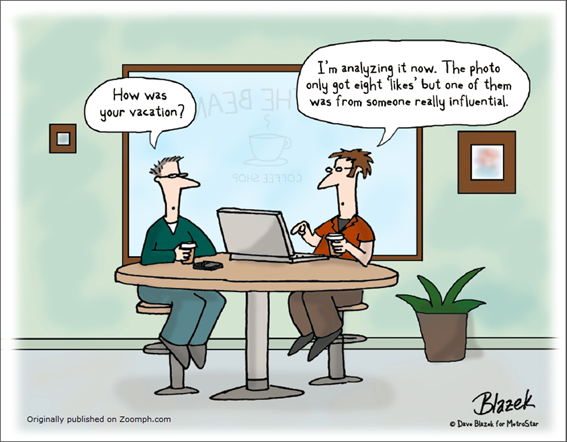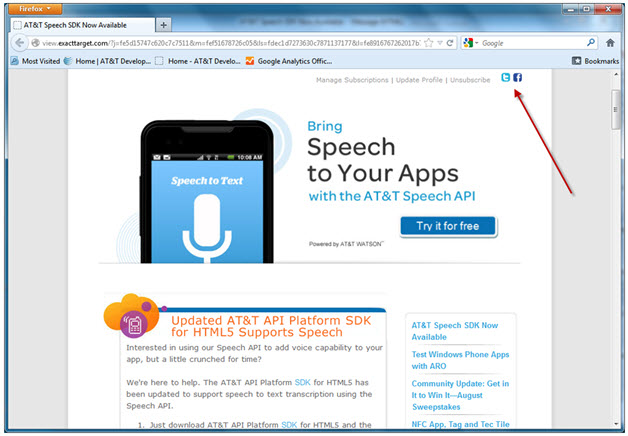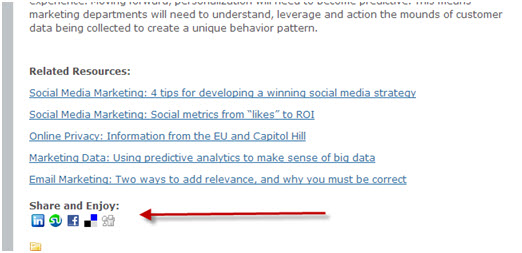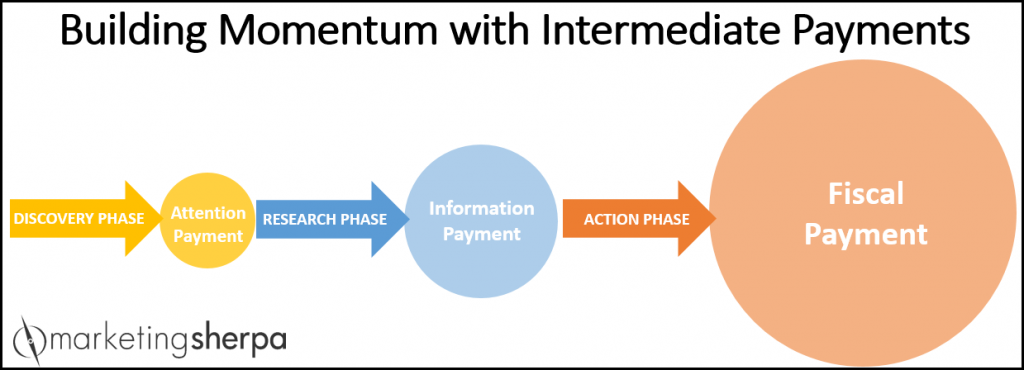A common question we often hear about social media is “I put some social media elements onto my page and have not seen much of a difference …”
I’m sure you can relate, because social media icons are everywhere. On landing pages. In emails. Heck, I even saw some on a billboard while I was driving the other day.
Now, on behalf of Facebook, Twitter, LinkedIn and their investors, I’d first like to thank you marketers of the world for all of that free co-op advertising.
All kidding aside, let me throw the questions back at you to help you get the most value from your sharing icons. In today’s MarketingSherpa blog post, we’ll focus on three questions you should ask yourself about your company’s use of social media icons.

Question #1. Should we be using social media icons?
All jokes about free advertising aside, most marketers likely will find some value in using social media icons. And, here’s the key. While the value might not be great, it is likely higher than the cost.
Because, frankly, as marketing tactics go, simply slapping a few social media icons or sharing buttons on a landing page is fairly easy to do. Almost any value you get creates an ROI since it is higher than the minimal cost involved.
For example, AT&T added Facebook and Twitter icons into an email newsletter.

This was one small part of a program that helped the AT&T Developer Program increase its Twitter audience 136% and Facebook audience 113%.
Of course, as you’ll see in the case study above, the team at AT&T did much more than just add a few icons to an email to get that lift. But since the cost, in both IT execution to add the buttons and real estate on the email, was likely so low, and it certainly couldn’t have hurt their efforts, why not add social media icons?
Well, here’s why not. For most brands, the answer is simple: not every brand needs or should be using social media icons and sharing buttons. For example, I interviewed Steve Parker, Vice President, Direct Marketing, firstSTREET, in the MarketingSherpa webinar “Optimization: A discussion about an e-commerce company’s 500% sales increase.”
“In our case given our target market, you’re looking at an age 75+ customer, they’re not big social users. And, the ones who are on social media, they really just want to see pictures of their grandkids and their kids. So they’re not going to be as interactive in the social world. So from our standpoint, it’s pretty low on the priority list. There are no social buttons on this website,” Steve said.
He went on to share, “We’ve tested a little bit of that on some of our other properties. As baby boomers, the younger part that grew up with some social media lives grow older, yes, that will get more important. For my particular target market at this point in time, it doesn’t help.”
Question #2. Which social media icons should we use?
Ask your audience in direct conversations, in surveys, through customer service interactions and other customer-facing employees: what social networks do they use?
Then, be present on those platforms. See how they’re using social media.
And, look at your analytics.
Here on the MarketingSherpa blog, you’ll notice the prime social sharing button we use is from Twitter.

That’s because when we looked at our analytics, more inbound traffic came from Twitter than from any other social network.
You might also notice, at the bottom of our blog posts, we have social media sharing icons as well.

That’s because the rest of our inbound social network traffic came from LinkedIn, StumbleUpon, Facebook, Delicious and Digg.
Your analytics won’t be foolproof. Over time, this becomes a self-fulfilling prophesy (we receive more Twitter traffic because we encourage the audience to share on Twitter), but combining your analytics with active listening to your audience through many means will at least get you in the ballpark of how they want to interact with your brand using social media.
Read more…













